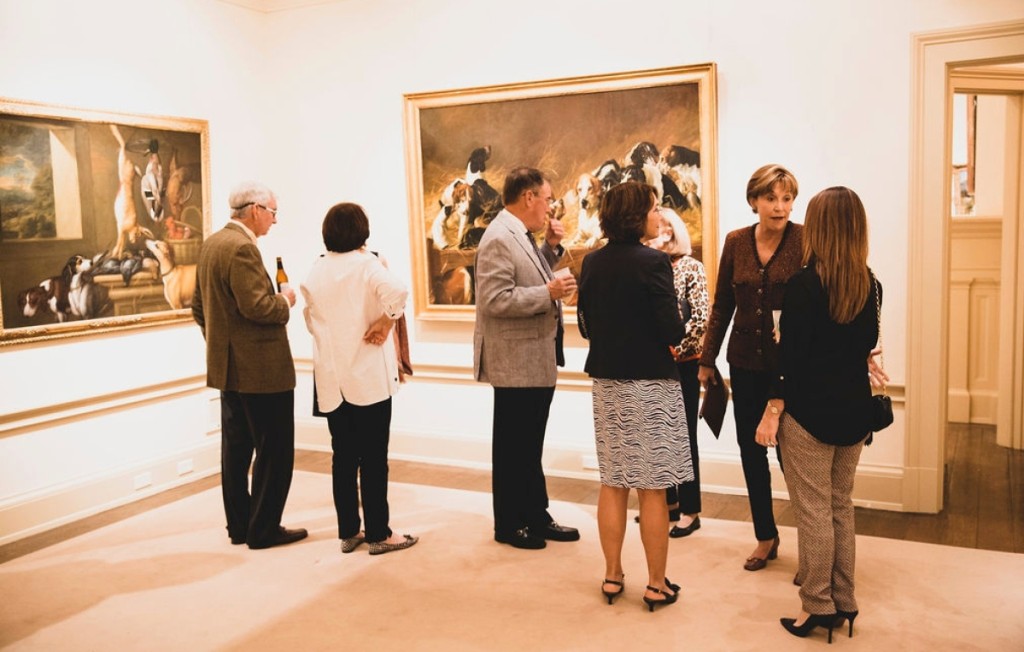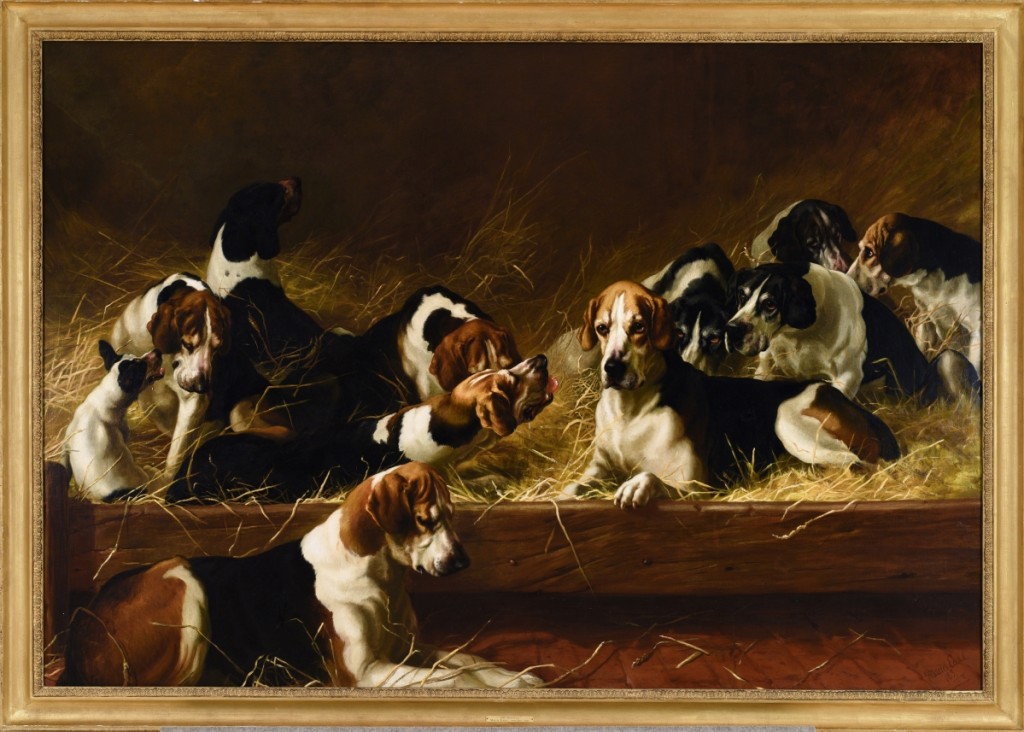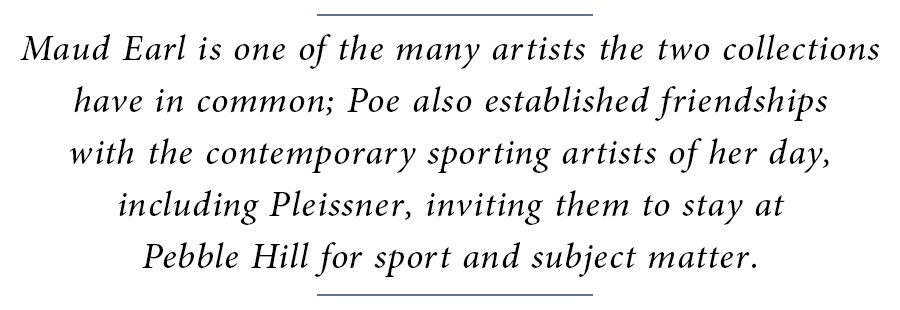By Jessica Skwire Routhier
THOMASVILLE, GA. – If you are among the more than 11 million Americans who watched this year’s National Dog Show as part of your Thanksgiving Day celebrations, you know that there is a whole competitive class categorized as “Working” dog: your water-rescue dogs, your house guarders, your Alpine bearers of barrels of healing spirits. But the categorization always seems a bit imperfect, because of course so many of the other dogs – the most obvious example being the Herding category – are no less hard working. In fact, a characteristic common to all canine breeds, from the huskiest husky ever to pull a sled to the daintiest toy Shih Tzu ever to sit upon a silken pillow, is the utter commitment to doing whatever it was born, bred and trained to do. Every show dog, it bears noting, is working just by being there, by running its courses with alacrity and aplomb. That eager dutifulness, the earnest drive to be of value, and the ability to do so with charm and style lends a positive association to the familiar but sometimes pejorative phrase “working like a dog,” which is the title of the exhibition at Pebble Hill Plantation through April 25.
“Working Like a Dog” was organized by the Genesee Country Village & Museum (GCV) in Mumford, N.Y., and was seen there earlier in 2018; it will return to the GCV for the museum’s 2019 season, from May to October. At the GCV, the exhibition incorporated local historical artifacts and interactive displays – GCV curator Patricia Tice spoke enthusiastically about a recreation of a dog-powered “Enterprise” treadmill, used to churn butter – but the Pebble Hill installation focuses on a core collection of paintings amassed by the GCV’s founder, John (Jack) Wehle.
Wehle, chairman of the famed Genesee Brewing Company, shared the preservationist impulse of many affluent Americans in the postwar era. In the mid- and late 1960s, he began to acquire some 58 historic buildings that were sprinkled through the Finger Lakes region, and he moved them to a new campus in Mumford to establish a recreated Nineteenth Century village that would allow the public to experience a way of life that had all but disappeared.
The GCV was one of many similar American organizations founded around this time – Shelburne Museum in Vermont, for example, was founded in 1947 with a similar mission – and here, as in some other examples, the founder’s interests dovetailed with an interest in sporting art. (Shelburne Museum is the main repository for works by sporting artist Ogden Pleissner, among the artists included in “Working Like a Dog.”) By the mid-Twentieth Century, this genre of painting was steeped in nostalgia, a paeon to the vigorous, outdoor leisure pursuits that, like the villages of early America, were fast losing ground to the allure of the highway and the multiplex. “Sporting” in this context, it should be clarified, is more or less a euphemism for “hunting and fishing”; the faithful hounds who were involved in hunting comprise an important subgenre of this artform.
“As a hunter he always had dogs around him,” said Tice of Wehle. “When he looked at art…[he looked at] how realistic it was and how well it captured the spirit of the animal. He was very much a self-taught connoisseur of sporting art, and he had a really fine eye.” Indeed, the collection on view at Pebble Hill conveys the depth of Wehle’s interest and the seriousness of his collecting mission. Its three-century date span is impressive, from Francis Barlow’s “The Game Larder” of 1672 to paintings by Bob Coon from the 1970s.
The inclusion of “The Game Larder” at Pebble Hill serves to ground the exhibition in a longstanding tradition of British sporting art – for Barlow was British – where the genre was deeply connected to the feudal traditions of the landed aristocracy. In fact, Tice explains, “The Game Larder” can be connected to a specific protectionist impulse. It was painted just one year after the passage of the Game Act of 1671, which effectively limited hunting only to owners of land above a certain value. The legislation also prohibited non-landowners from owning hunting dogs. In this context, Tice notes, the painting, with its wealth of gamebirds and a hare strung up and ready for dressing, its attentive spaniel and greyhound surveying both their handiwork and, presumably, their reward, and the view outside the window of an open, wooded landscape, is an “unabashed statement of wealth and privilege.” The British association of hunting with privilege endured, as did the artwork that celebrated it; two centuries later, John Sargent Noble’s “Pointers and Dead Game” strikes much the same note.
In its earliest years, American painting was deeply informed by such European artistic traditions. One of the primary painting genres that crossed the Atlantic between Britain and America was the so-called Grand Manner portrait, an idiom arguably invented by Titian and other Venetians in the 1500s but adopted with enthusiasm by Eighteenth Century English portraitists like Thomas Gainsborough and Sir Joshua Reynolds. A surprising number of these Grand Manner portraits position a canine companion alongside their human subject or subjects, a conceit that the Canadian American artist Nelson Cook employed for his 1850 portrait of Millard Powers Fillmore, son of the US president.
The painting is, Tice says, “an American version of a portrait in the Grand Manner,” showing Fillmore and his “trusty retriever” in a “proprietal stance” in front of a vista of Lake Erie and the village of Dunkirk, presumably part of the family’s holdings at the time. With his rifle in hand and in his state of “genteel undress,” as Tice termed it – unbottoned frock coat, button-fly trousers, simple neckerchief and straw hat – Fillmore “presented an ideal image of American manhood…as at home in the wilderness, hunting, as he is in the city,” conveying the popular philosophy that “the successful businessman [or politician] brings all the skills of a hunter to his business and pursues his quarry with the same amount of skill.”
The young Fillmore’s dog functions here as a symbol – an index of status and a sign of youthful discipline – but it was also probably a specific and esteemed dog. In a meaningful way, then, the portrait is one of a dog as well as a young man. By the end of the century, it was common enough for a particularly special dog to merit its own standalone portrait. Dog breeding, long a popular pursuit among the aristocratic classes, went mainstream in the late Victorian era, with the first competitive dog shows taking place in the 1860s and 1870s on both sides of the Atlantic. The distinctive features of each breed – personality traits as well as physical ones- became continuously codified and classified, with certain exceptional dogs recognized as the standard-bearers of their breed.
Case in point: the champion pointer Mark’s Rush, portrayed by painter Gustav Muss-Arnolt in 1906, was remembered five years later by a breed scholar as “one of the very best pointer dogs from a bench show point of view that this country ever saw.” And although their names may be lost to time, the Jack Russell Terrier depicted by Arthur Wardle and the setter by Arthur Fitzwilliam Tait are clearly champions and individualized portraits as well. Like Mark’s Rush, they strike formal show poses in lush wooded settings. So obedient and self-composed and dedicated to their mission were these dogs, one fancies, that they were even willing to sit for a portrait.

Opening reception at Pebble Hill with Francis Barlow’s “The Game Larder,” 1672, on left and Maud Earl’s “Old Benchers” on right.
That same heartfelt devotion to purpose is visible in some of the human stories that the exhibition tells as well. We have already learned of Jack Wehle’s dedication to his museum project; something similar can be seen in Elisabeth “Pansy” Ireland Poe, the last private owner of Pebble Hill plantation. A denizen of Cleveland’s famed Hanna family – industrialists and philanthropists to a man (or woman, as the case may be), Poe in 1936 became the owner of the Georgia property that her grandfather Howard Melville Hanna had purchased as a summertime hunting retreat 40 years before. Through the ravages of the Depression, a fire that destroyed the main house and personal hardships, Poe worked – like a dog, if you will – to maintain and improve the property so that it would remain a welcoming greenspace and a restful retreat from the outside world. It was her vision to form a foundation so that upon her death, the house and grounds would be preserved and open to the public as a representation of a “Twentieth Century shooting plantation.”
For generations, Pebble Hill had hosted guests and visitors for grouse hunts, and Poe participated eagerly in and continued that tradition. Although Wehle and Poe were different kinds of philanthropists, in different parts of the country, their shared interests in preservation and sportsmanship knit together the missions of their respective museums. “The subject matter [of this exhibition] fits so beautifully with Pebble Hill’s history and this region,” said Whitney White, executive director of Pebble Hill. Many paintings in Wehle’s collection reflect the practice of Pebble Hill’s main attraction for family and their guests, showing setters, spaniels, and retrievers – grouse-hunting dogs – rousting about in the underbrush, standing proud guard over their quarry, or waiting eagerly in the wings to join the hunt. Look at the sweet, eager faces of Wardle’s “Setters on a Heather Covered Heath,” or the wary vigilance of the dogs in James Hardy, Jr’s “Waiting for Master,” or the absolute inability of Maud Earl’s “Old Benchers” to sleep in their hay-strewn bed when there is the possibility of a job to be done.
Like Wehle, Poe was interested not just in the sporting life but in sporting art as well, developing her own collection that is housed in Pebble Hill’s Elisabeth Ireland Poe Gallery, on the second floor of the main house. Maud Earl is one of the many artists the two collections have in common; Poe also established friendships with the contemporary sporting artists of her day, including Pleissner, inviting them to stay at Pebble Hill for sport and subject matter. The “Working Like a Dog” exhibition is augmented here by a smaller exhibition called “Working Dogs of Pebble Hill,” featuring commissioned paintings and photographs of pets as well as hunting dogs, including especially a much-loved German Shepherd named Gloria.
A painting by Frank Wootton exemplifies the sporting art tradition of the later Twentieth Century. Though its style is scarcely avant-garde compared to much of what was being shown in New York galleries in 1969, it was decidedly cutting-edge for the determinedly conservative genre of sporting art. Wootton had been an aviation artist with the British Royal Air Force during World War II, and his painting “Fox Hounds in Full Cry” captures a sense of rushing motion with its sweeping, expressionistic brushstrokes. The pervasive nostalgia common to most sporting art – the elegiac tone of a time gone by – remains, but in this postwar era the nostalgia is perhaps less for a time of structured gentility and class distinctions and, more universally, for a time when a thundering noise in the distance was not bombs but hunters riding to hounds, when action and speed and energy were associated with sport and not warfare, and when both guns and dogs were used to better ends.
The Pebble Hill Plantation is located at 1251 US-319. For more information, 229-226-2344 or www.pebblehill.com.



















